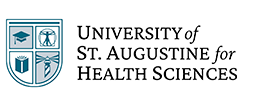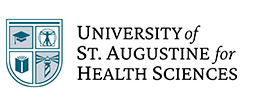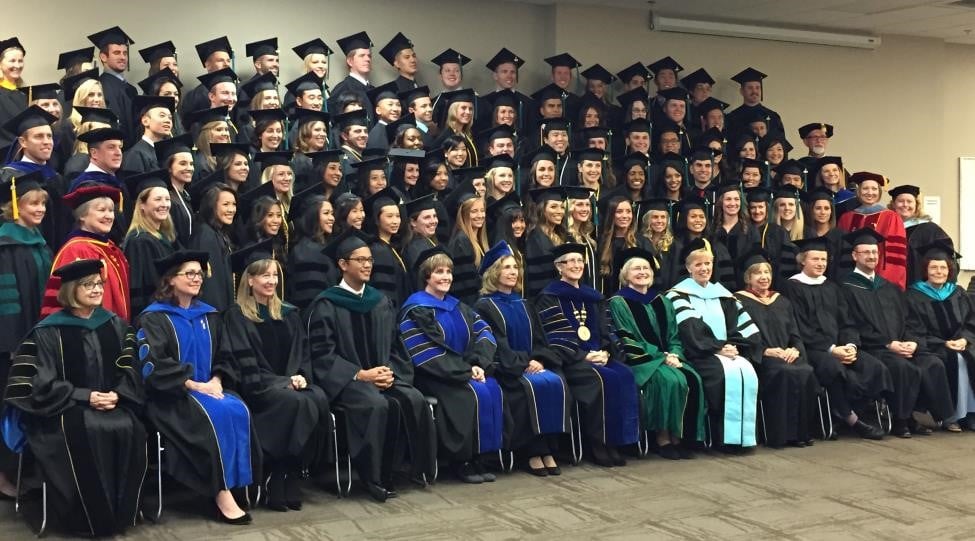
Nursing is a field full of opportunity, with impressive projected job growth and a need for skilled professionals to address an ongoing staffing shortage. From registered nurses (RNs) to licensed practical or vocational nurses (LPNs/LVNs) and from nurse practitioners (NPs) to nurse anesthetists, nurses are the backbone of the healthcare industry. We’ve gathered 60 nursing statistics that reveal surprising truths about the demographics of nurses, job satisfaction, average salaries, the nursing shortage, COVID-19’s impact on the profession, trends in nursing and nursing education. These key stats and nursing trends—detailed in eye-catching infographics—reveal the realities of American nursing in 2024.
Table of Contents:
Section 1: Nursing Demographics in 2024
Section 2: Nursing Statistics on Job Satisfaction
Section 3: Nursing Salary Statistics
Section 4: Statistics in Nursing Shortage
Section 5: Statistics About Nurses’ Injuries
Section 6: COVID-19 Statistics for Nurses
Section 7: Current Trends in Nursing
Section 8: Nurse Statistics in Education
Section 9: Trends in Nursing Education
Nursing Demographics in 2024
Let’s start with a look at statistics in nursing related to the people who work in one of the country’s most populous professions.
- There are almost 5,239,499 RNs and 973,788 LPNs/LVNs in the United States.1
- Over 385,000 nurse practitioners (NPs) are licensed in the United States.2
- There are nearly 5x as many nurses in the United States as physicians.1 ,3
- Nursing careers make up the largest portion of America’s healthcare professions.4
- The median age of a registered nurse is 46 years old.1
- The RN workforce is1: 80% Caucasian, 7.4% Asian, 6.3% Black, 0.4% American Indian or Alaska Native, 0.4% Native Hawaiian or Other Pacific Islander, 3% Other, 2.5% More than one race category selected
- 2% of the RN and 10.2% of the LPN/LVN workforce are men.1
- The LPN/LVN workforce is:19% Caucasian, 6.3% Asian, 17.6% Black, 0.6% Native Hawaiian or Other Pacific Islander, 5.4% Other, 3.0% More than one race category selected
- The number of male nurses has tripled over the past 50 years.5
- In the Pacific region of the U.S., 30.5% of nurses are people of color, the largest percentage in the country.6
Nursing Statistics on Job Satisfaction
Nursing is a well-respected profession that requires dedication, ethics and compassion. Here, we examine nurse statistics about how nurses feel about their profession, as well as how American society perceives nurses.
- In Gallup polls, nurses have been identified as the most honest and ethical professionals for the past 19 years. They won 89% of the vote in 2020.7
- The job of nurse practitioner is ranked #1 on U.S. News & World Report’s 2024 Best Jobs list.8
- 72% of nurses say they would follow the same educational path as a nurse and 40% said they would go into the same practice setting.9
- If they had to do it over again, 79% of nurses say they would still choose their current career.10
- 5% of new RNs leave their first job within one year.11
- Registered nurse is ranked #10 and nurse anesthetist is ranked #6 on U.S. News & World Report’s 2024 Best Health Care Jobs list.12
Nursing Salary Statistics
Knowing the potential financial benefits and job opportunities can be a powerful motivator for beginning a nursing career. Here are some key statistics in nursing about earning power.
- The median annual salary for registered nurses in May 2023 was $86,070.13
- The median annual salary for an LPN/LVN was $59,730 in May 2023.14
- Advanced practice nurses (including NPs, nurse anesthetists and nurse midwives) earned a median annual salary of $129,480 in May 2023.15
- Registered nursing is one of the highest-paying large occupations.16
- There are 194,500 open registered nursing jobs projected each year, on average, over the decade in the United States. The projected growth of registered nurses is expected to be 6% between 2023 and 2033.17
- 58% of RNs work in hospitals, with 19% in ambulatory care, 5% in nursing and residential care facilities, 6% in government and 3% in educational services.18
- Registered nursing is the fourth most in-demand profession in the American workforce today.19
- 2% of currently employed RNs and 71% of LPNs/LVNs work in nursing full-time.1
- Arizona is ranked the best state for nurses based on its average annual salary, projected job growth and cost of living index.


Statistics in Nursing Shortage
The current nursing shortage is a major factor in understanding the state of American healthcare. Below are some key statistics in nursing shortages around the country.
- Federal authorities project a shortage of 78,610 full-time RNs by 2025 and a shortage of 63,720 full-time RNs by 2030.20
- More than 85% of California hospitals report that demand for RNs is greater than supply.21
- The nursing shortage is due in part to the rapid 73% increase of the 65+ population, which grew from 41 million in 2011 to 71 million in 2019.4
- Retiring nurses also means retiring nursing faculty, translating to fewer nurses being trained to fill in the gaps.4
- StatPearls, February 2023
- 7% of all registered nurses and 25.6% of all LPNs/LVNs plan to retire within the next five years.1
- Nursing shortages can lead to errors, higher morbidity and higher mortality rates.4
Statistics About Nurses’ Injuries
Nurses spend many hours on their feet and are exposed to potentially harmful health risks, which can lead to injuries on the job.
- In 2020, RNs experienced 78,740 incidences of nonfatal workplace injuries or illnesses.22
- In 2016, 1% of RNs’ nonfatal workplace injuries and illnesses happened in hospitals.23
- The most common occupational injury for RNs in 2016 was overexertion and bodily reaction, accounting for 45.6% of cases23
- Of nurses’ workplace injuries in 2016, falls, slips, and trips represented 25%.23
- In 2016, 8% of the injuries and illnesses sustained by RNs were caused by patients.23


COVID-19 Statistics for Nurses
The COVID-19 pandemic highlighted the country’s ongoing need for more nurses to meet the demands of a global health crisis. Here are some key nurse statistics from that period in healthcare.
- In a 2020 survey, 41% of nurses reported experiencing high exposure to COVID-19.24
- A 2021 study showed that nurses suffered the highest death count among U.S. healthcare workers at the beginning of the pandemic.25
- High numbers of nurses reported feelings of being overwhelmed (51%), anxious (48%) and irritable (48%) amid the pandemic.26
- In an ANA survey during the pandemic, 60% of nearly 11,000 nurses reported difficulty sleeping.26
- Over 25% of the nurses who died from COVID-19 in the first year of the pandemic were Filipino American, even though only 4% of American nurses identify as Filipino.27
- In a survey by American Nurse Journal conducted at the beginning of the pandemic, 85% of nurses said they do not plan to change careers because of the COVID-19 pandemic.28
- Nurses were less likely to receive emotional support to deal with the stresses of COVID-19 than other healthcare workers.24
- The demand for skilled nurses during the pandemic revealed the need for more nursing faculty.29
Current Trends in Nursing
The challenges and strain facing nurses from the pandemic has led to these growing trends in nursing in 2024.
- In 2023, 61% of nurses surveyed by the American Nursing Journal reported a pay raise in the previous 12 months.10
- The demand for travel nurses has rapidly increased in recent years, with 91% of nurse staffing agencies reporting revenue growth from 2019 to 2020.30
- COVID-19 led to an emergency allowance of cross-state medical practice through an enhanced Nurse Licensure Compact.31
- Telehealth is here to stay, with usage having stabilized at levels 38 times higher than the pre-pandemic baseline.32


Nurse Statistics in Education
From certificate programs to advanced nursing degrees like a Master of Science in Nursing (MSN), education is a critical step in every nursing career path. Here are some RN statistics about education in the field.
- 1% of RNs have earned a Bachelor of Science in Nursing (BSN) degree, while 1.6% have earned a Doctor of Nursing Practice (DNP) degree.1
- Within four to six months of completing their programs, 95% of BSN graduates and 93% of MSN graduates have secured job offers.33
- 76% of new BSN graduates and 74% of entry-level MSN graduates had a job offer upon graduation.34
- A bachelor’s degree is now a requirement for new hires by 28% of employers, and strongly preferred by 72% of employers.16
- Nurse educators are predominantly women, with a ratio of: 93% female, 7% male.29
- In 2021-2022, more than 39,000 people graduated from nurse practitioner programs.2
- Black nurses outpace white nurses in securing advanced nursing degrees, 14.6% to 13.4%.6
- Only 6% of full-time nurse educators are people of color: Black 9%, Hispanic 3.4%, Asian 2.9%, Native American 0.4%, Multiracial 0.8%.29
Trends in Nursing Education
As the landscape of education adjusted to increased remote learning in 2020-2021, students have encountered some new and ongoing trends in nursing study.
- Expect the online education opportunities to continue post-pandemic, as reports show that a blend of in-person and distance learning can be pedagogically beneficial to nursing students.35
- Advanced nursing degrees will attract more new students, based on recent enrollment increases in master’s and doctoral programs.36
- More clinical sites are needed at nursing educational institutions. 65,766 qualified applications were turned away from schools of nursing due to a shortage of sites and other resources in 2023.37
- The search for more nursing faculty continues. 82% of schools surveyed said they are seeking to hire new faculty.29
The nursing industry is a foundational aspect of healthcare in America. With the heightened need for nurses at every level, as well as nurse educators, the time is right to explore the opportunities that a career in nursing offers.
The University of St. Augustine for Health Sciences (USAHS) offers a Master of Science in Nursing (MSN) program, a Doctor of Nursing Practice (DNP) program, and Post-Graduate Nursing Certificates designed for working nurses. Our nursing degrees are offered online , with optional on-campus immersions. Role specialties include Family Nurse Practitioner (FNP), Nurse Educator,**, Adult Gerontology Nurse Practitioner (AGNP), Psychiatric Mental Health Nurse Practitioner (PMHNP), and Nurse Executive. The MSN has several options to accelerate your time to degree completion. Earn your advanced nursing degree while keeping your work and life in balance.
*The FNP role specialty includes one required hands-on clinical intensive as part of the curriculum.
**The Nurse Educator role specialty is not available for the DNP program, and we are currently not enrolling new students.
Salary data may not reflect starting pay for recent graduates.
Sources
- Richard A. Smiley, Richard L. Allgeyer, et al., “The 2022 National Nursing Workforce Survey,” Journal of Nursing Regulation, April 2023, https://www.journalofnursingregulation.com/article/S2155-8256(23)00047-9/fulltext.
- American Association of Nurse Practitioners, “NP Fact Sheet,” AANP, February 2024, https://www.aanp.org/about/all-about-nps/np-fact-sheet.
- Statista Research Department, “U.S. physicians – statistics & facts,” Statista, July 18, 2024, https://www.statista.com/topics/1244/physicians/#topicOverview.
- Lisa M. Haddad, Pavan Annamaraju, et al., “Nursing Shortage,” StatPearls, February 13, 2023, https://www.ncbi.nlm.nih.gov/books/NBK493175/.
- Jennifer Clark, “10 Thought-Provoking Statistics about Modern Nursing,” Gebauer Company, April 27, 2017, https://www.gebauer.com/blog/statistics-about-modern-nursing.
- Minority Nurse, “Nursing Statistics,” Minority Nurse, 2015, https://minoritynurse.com/nursing-statistics/.
- Lyda Saad, “U.S. Ethics Ratings Rise for Medical Workers and Teachers,” Gallup, December 22, 2020, https://news.gallup.com/poll/328136/ethics-ratings-rise-medical-workers-teachers.aspx.
- Kara Coleman Fields, “U.S. News Ranks the Best Jobs of 2024,” U.S. News & World Report, January 9, 2024, https://money.usnews.com/careers/articles/u-s-news-ranks-the-best-jobs.
- Jennifer Nelson, “Fulfillment and Frustration: Medscape Nurse Career Satisfaction Report 2023,” Medscape, December 12, 2023, https://www.medscape.com/slideshow/2023-nurse-career-satisfaction-6016810#12.
- David J. Gilmartin and Cynthia Saver, 2023 nursing trends and salary survey results, “ American Nurse Journal, December 29, 2023, https://www.myamericannurse.com/2023-nursing-trends-and-salary-survey-results/.
- New York University, “Estimated 17.5 percent of new nurses leave first job within a year, according to survey of newly-licensed registered nurses,” ScienceDaily, September 9, 2014,
https://www.sciencedaily.com/releases/2014/09/140909162300.htm#:~:text=An%20estimated%2017.5%20percent%20of,at%20other%20health%20care%20settings. - U.S. News & World Report, “Best Health Care Jobs,” U.S. News & World Report, 2024, https://money.usnews.com/careers/best-jobs/rankings/best-healthcare-jobs.
- U.S. Bureau of Labor Statistics, “Registered Nurses: Pay,” BLS, April 17, 2024, https://www.bls.gov/ooh/healthcare/registered-nurses.htm#tab-5
- U.S. Bureau of Labor Statistics, “Licensed Practical and Licensed Vocational Nurses: Pay,” BLS, April 17, 2024, https://www.bls.gov/ooh/healthcare/licensed-practical-and-licensed-vocational-nurses.htm#tab-5.
- U.S. Bureau of Labor Statistics, “Nurse Anesthetists, Nurse Midwives, and Nurse Practitioners: Pay,” BLS, April 17, 2024, https://www.bls.gov/ooh/healthcare/nurse-anesthetists-nurse-midwives-and-nurse-practitioners.htm#tab-5.
- American Association of Colleges of Nursing, “Nursing Workforce Fact Sheet,” AACN, April 2024, https://www.aacnnursing.org/news-Information/fact-sheets/nursing-fact-sheet.
- U.S. Bureau of Labor Statistics, “Registered Nurses: Work Environment,” BLS, April 2024, https://www.bls.gov/ooh/healthcare/registered-nurses.htm#tab-6.
- U.S. Bureau of Labor Statistics, “Registered Nurses: Work Environment,” BLS, April 2024, https://www.bls.gov/ooh/healthcare/registered-nurses.htm#tab-3.
- Greg Lewis, “The Most In-Demand Jobs on LinkedIn Right Now,” LinkedIn, July 18, 2024, https://www.linkedin.com/business/talent/blog/talent-strategy/most-in-demand-jobs.
- National Center for Health Workforce Analysis, “Nurse Workforce Projections, 2020-2035,” HRSA, November 2022, https://bhw.hrsa.gov/sites/default/files/bureau-health-workforce/Nursing-Workforce-Projections-Factsheet.pdf.
- Lela Chu and Joanna Spetz, “Survey of Nurse Employers in California, Fall/Winter 2018-19,” UCSF, April 23, 2020, https://rnworkforce.ucsf.edu/sites/rnworkforce.ucsf.edu/files/employerreport_2018.pdf.
- U.S. Bureau of Labor Statistics, “Nonfatal injuries and illnesses resulting in days off work among nurses up 291 percent in 2020,” BLS: The Economics Daily, May 6, 2022, https://www.bls.gov/opub/ted/2022/nonfatal-injuries-and-illnesses-resulting-in-days-off-work-among-nurses-up-291-percent-in-2020.htm.
- U.S. Bureau of Labor Statistics, “Occupational injuries and illnesses among registered nurses, BLS: Monthly Labor Review, https://www.bls.gov/opub/mlr/2018/article/occupational-injuries-and-illnesses-among-registered-nurses.htm.
- Mental Health America, “The Mental Health of Healthcare Workers in COVID-19,” MHA, 2024, https://mhanational.org/mental-health-healthcare-workers-covid-19.
- The Guardian, “Our key findings about US healthcare worker deaths in the pandemic’s first year,” The Guardian, April 8, 2021, https://www.theguardian.com/us-news/ng-interactive/2020/dec/22/lost-on-the-frontline-our-findings-to-date.
- American Nurses Foundation, “Mental Health and Wellness Survey 1,” ANF, August 2020, https://www.nursingworld.org/practice-policy/work-environment/health-safety/disaster-preparedness/coronavirus/what-you-need-to-know/mental-health-and-wellbeing-survey.
- Julian Glover, “‘None of us signed up to die’: Filipino American nurses disproportionately impacted by COVID-19,” ABC7 Bay Area, May 10, 2021, https://abc7news.com/filipino-americans-nurses-covid-deaths-nurse-sacrifices-registered-dead-from/10557478/.
- Catherine Spader, “2020 nursing trends and salary survey results,” American Nurse Journal, November 2, 2020, https://www.myamericannurse.com/2020-nursing-trends-and-salary-survey-results/.
- National League for Nursing, “NLN Faculty Census Survey of Schools of Nursing Academic Year 2018-2019: Executive Summary,” NLN, https://www.nln.org/docs/default-source/uploadedfiles/newsroom/nursing-education-statistics/2018-19-executive-summary.pdf?sfvrsn=360da00d_0.
- Curtis Starkey, “Travel nursing still leading healthcare; new year brings both challenges and opportunities,” Staffing Industry Analysts, February 9, 2021, https://www.staffingindustry.com/Editorial/Healthcare-Staffing-Report/Archive-Healthcare-Staffing-Report/Feb.-11-2021/Travel-nursing-still-leading-healthcare-new-year-brings-both-challenges-and-opportunities.
- National Council of State Boards of Nursing, “The Nurse Licensure Compact and COVID-19 – a Tale of Two States” NCSBN, Jun 1, 2020, https://www.ncsbn.org/news/the-nurse-licensure-compact-and-covid19–a-tale-of-two-states.
- Oleg Bestsennyy, Greg Gilbert, et al., “Telehealth: A quarter-trillion-dollar post-COVID-19 reality?,” McKinsey & Company, July 9, 2021, https://www.mckinsey.com/industries/healthcare/our-insights/telehealth-a-quarter-trillion-dollar-post-covid-19-reality.
- American Association of Colleges of Nursing, “Employment of New Nurse Graduates and Employer Preferences for Baccalaureate-Prepared Nurses,” AACN, October 2022, https://www.aacnnursing.org/Portals/0/PDFs/Data/Research-Brief-10-22.pdf.
- American Association of Colleges of Nursing, “Employment of New Nurse Graduates and Employer Preferences for Baccalaureate-Prepared Nurses,” AACN, December 2020, https://www.aacnnursing.org/Portals/0/PDFs/Data/Research-Brief-12-20.pdf.
- Ulrica Langegård, Kiana Kiani, et al. “Nursing students’ experiences of a pedagogical transition from campus learning to distance learning using digital tools,” BMC Nursing, January 19, 2021, https://bmcnurs.biomedcentral.com/articles/10.1186/s12912-021-00542-1.
- American Association of Colleges of Nursing, “Student Enrollment Surged in U.S. Schools of Nursing in 2020 Despite Challenges Presented by the Pandemic,” AACN, April 1, 2021, https://www.aacnnursing.org/news-data/all-news/article/2020-survey-data-student-enrollment.
- American Association of Colleges of Nursing, “Nursing Shortage Fact Sheet,” AACN, May 2024, https://www.aacnnursing.org/news-data/fact-sheets/nursing-shortage.








